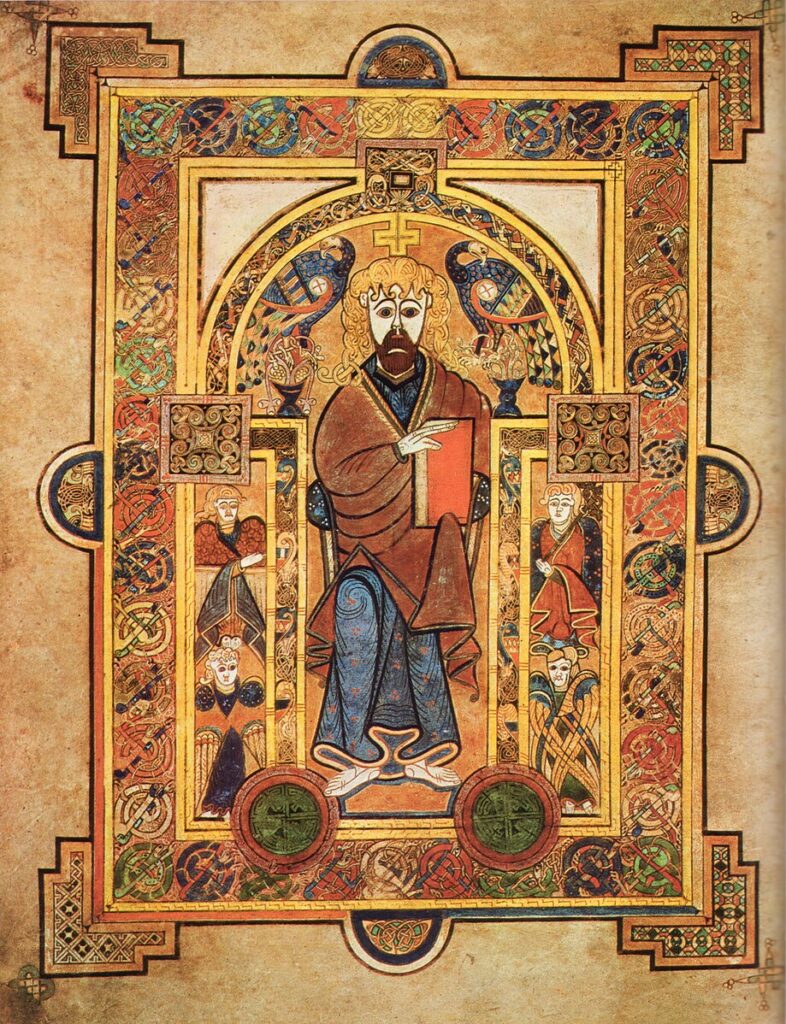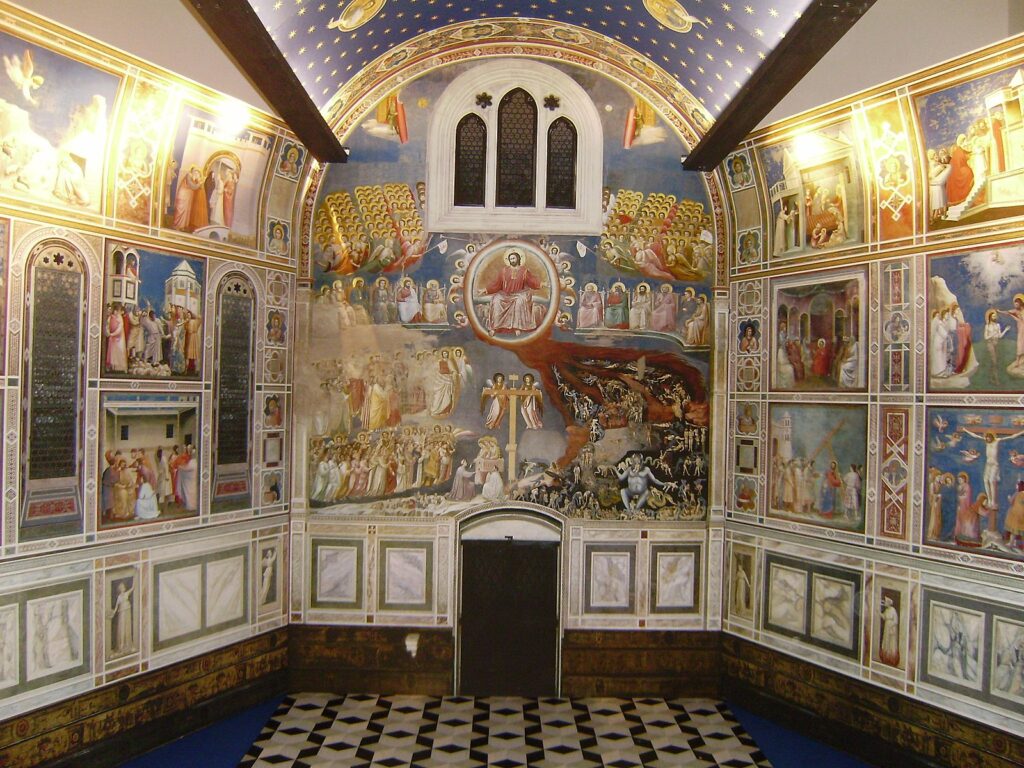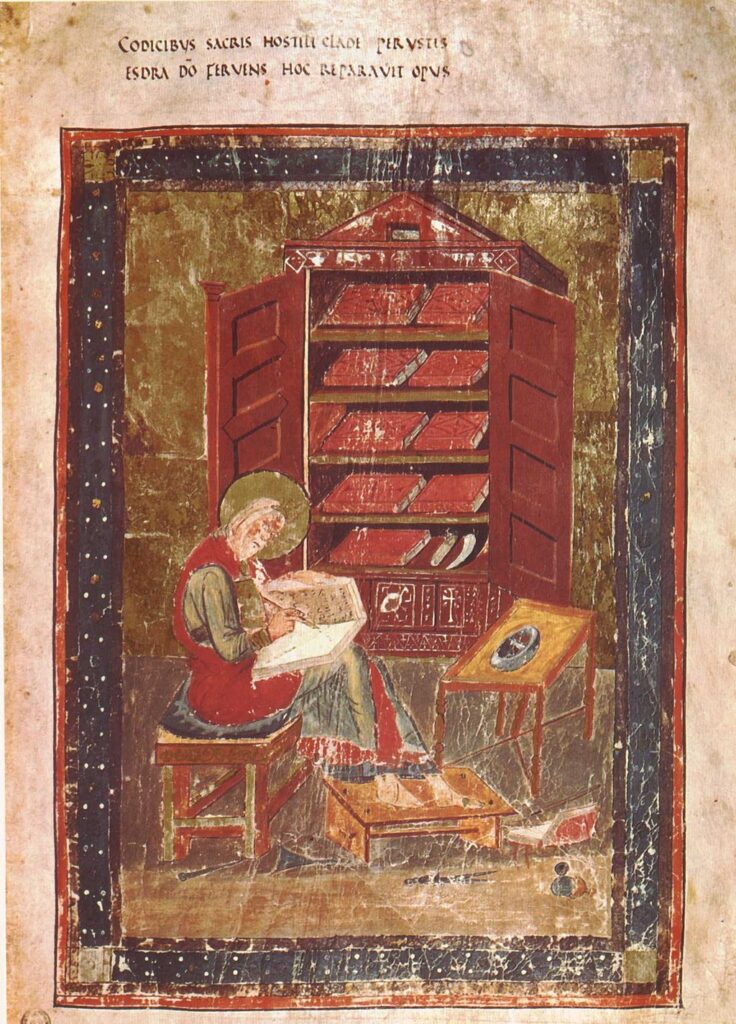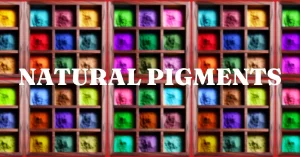The history of the Medieval Art Movement shows us that artwork made during this period was mostly of religious and cultural subjects. With the spread of Christianity across the European continent, art subjects and narratives became heavily influenced by biblical stories. Even artwork made in Africa and Asia around this time had their own deities and mythological figures as their favourite subject matter.
What type of art was created during the Medieval movement?
Mostly paintings and carvings were popular creations during the Medieval art movement
Medieval Art was created and popular during which years?
Medieval, Gothic and Romanesque art movements overlapped for a few years. Essentially, there were numerous art movements that existed within the Medieval period.
The timeline of some major art movements during the Medieval period is, roughly, as follows:
- Medieval Art Movement – 467 AD to the 14th century
- Romanesque Art Movement – 1000 AD to the 12th century
- Gothic Art Movement – late 12th century to the 16th century
Where was Medieval Art made and popularised?
Europe, parts of Africa and Asia had their own regional art forms during the Medieval Art period.
What medium (media) and tools were used to make Medieval Art pieces?
Mosaics, paintings of oil and dyes, wood carvings, metal and marble work, and fresco art with gold and precious stone details were some of the popular media of Medival Art.
Who are some famous Medieval Art artists and artworks?
Codex Aureus Sankt Emmeram by Carolingian craftsmen

The Effects of Good Government by Lorenzetti Ambrogio

The Wilton Diptych

Interesting Observations about Medieval Art – Art Op-Ed
Medieval art tends to lean more towards a “medieval period” than an actual organised “medieval movement.” While there was a considerable amount of religious art for both Christianity and Islam during the Medieval period, it wasn’t particularly a time when religion was intended to be the major focus of the Medieval period. In other words, religious art happened to follow the medieval styles but the medieval style was not always meant to focus on making art of religious themes.
Furthermore, the history of the Medieval art movement shows that it had many art styles and periods within itself as well. Early Christian art, Moorish art, Byzantine art, Insular Saxon and Celtic art, Romanesque and Gothic were all roughly contained within the Medieval Art Period. Perhaps each of these parts of the world had the foundations of their own styles with a hint of influence from each other that may have come from travellers and tradesmen. A fascinating world where they talked about their passion for art after the working day was done.
Which art movement(s) came before the Medieval movement?
Ancient Art that came from the ancient, advanced civilisations provided the foundation for Medieval Art
Which art movement(s) came after the Medieval movement?
The Medieval Art movement overlapped with the Gothic and Romanesque art movements. After these movements came the infamous Renaissance period.
Top 10 Artworks of the Medieval Art Movement
The Lindisfarne Gospels: A Precious Book of Art and Faith

In the early medieval period, monks worked painstakingly to create illuminated manuscripts. One such masterpiece is the Lindisfarne Gospels, crafted around 700 AD in what is now England. Stories from this era tell of dedicated scribes who used vibrant pigments and intricate designs to bring sacred texts to life. The Lindisfarne Gospels are a testament to the fusion of art and faith in medieval times.
The Bayeux Tapestry: A Unique Historical Chronicle

The Bayeux Tapestry, created in the late 11th century, is an embroidered cloth that tells the story of the Norman Conquest of England. This remarkable artwork has an extraordinary length of 230 feet and is a tapestry made of embroidery pictures. It offers an intricate and vivid account of a pivotal moment in history.
Chartres Cathedral: A Testament to Gothic Grandeur

Chartres Cathedral, built in the 12th century in France, is a masterpiece of Gothic architecture and art. Also, stunning stained glass windows adorn the cathedral. These windows, with their vibrant colours and intricate designs, were intended to teach Bible stories to the illiterate masses. They remain a symbol of medieval craftsmanship and devotion.
The Book of Kells: A Celtic Masterpiece of Illumination

The Book of Kells, created in the early 9th century in Ireland, is a dazzling example of illuminated manuscript art. This piece has incredible attention to detail in the pages of this book, which includes intricate designs, complex interlace patterns, and vibrant colours. It’s a testament to the artistic skill of the monks who created it.
The Winchester Psalter: A Unique Medieval Sense of Humour

The Winchester Psalter, a 12th-century illuminated manuscript, is known for its fascinating marginalia. This work has whimsical and even some bizarre illustrations in the margins. These playful drawings provide insights into the medieval sense of humour and the imaginative world of the scribes.
Giotto’s Arena Chapel Frescoes: Bringing Stories to Life

Giotto di Bondone, an Italian painter from the 14th century, is celebrated for his frescoes in the Arena Chapel in Padua. Giotto had a unique ability to breathe life into religious stories through his paintings. His use of perspective and emotion in his artwork was groundbreaking for his time and left a lasting impact on the art scene.
The Unicorn Tapestries: Mystical Artistry

The Unicorn Tapestries, woven in the late 15th century, are a series of seven tapestries that depict the hunt for a mythical unicorn. Art enthusiasts ponder the inclusion of the unicorn, which was seen as a symbol of purity and grace in medieval Europe. These tapestries are renowned for their intricate details and rich symbolism.
The Codex Amiatinus: A Monumental Medieval Manuscript

The Codex Amiatinus, created in the early 8th century, is one of the largest surviving manuscripts from the medieval period. Opinions about this manuscript often highlight its sheer size and the effort it took to produce such a monumental work. It was created by a dedicated team of scribes and artists, showcasing the collaborative nature of medieval art.
The Bury Bible: A Marvel of Miniature Art

The Bury Bible, produced in the 12th century in England, is known for its intricate miniature paintings. There is an emphasis on the incredible skill required to create such detailed and small-scale artwork. These miniatures bring to life biblical scenes and stories in a way that resonated with medieval audiences.
The Master of Flemalle: A Mysterious Medieval Artist

The Master of Flemalle, an anonymous artist from the 15th century, is known for his meticulous attention to detail. There is speculation around the mystery of the artist’s identity and the enduring appeal of his works, which showcase a deep understanding of light, texture, and human emotion.
Medieval art, with its rich tapestry of stories and creativity, offers us a glimpse into a bygone era. These artworks remind us of the incredible craftsmanship, devotion, and imagination of medieval artists and craftsmen. Whether through illuminated manuscripts, cathedral windows, or whimsical marginalia, medieval art continues to enchant and inspire, preserving the essence of a world that existed centuries ago.
*Images from Wiki Commons







0 Comments